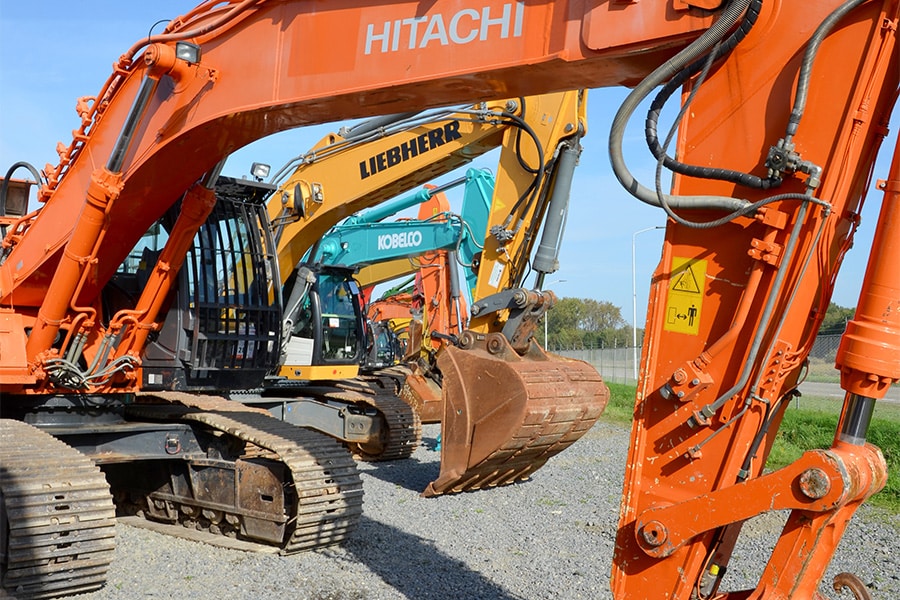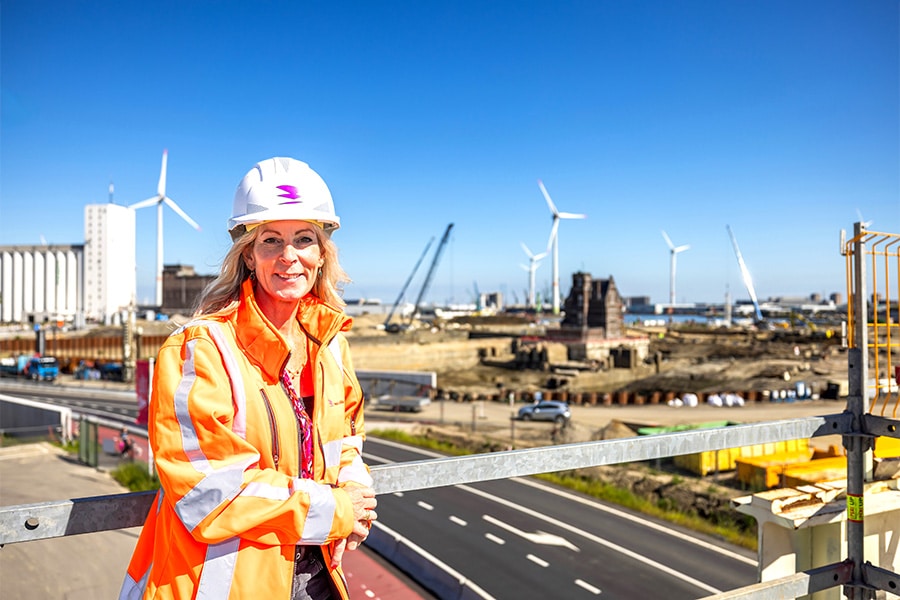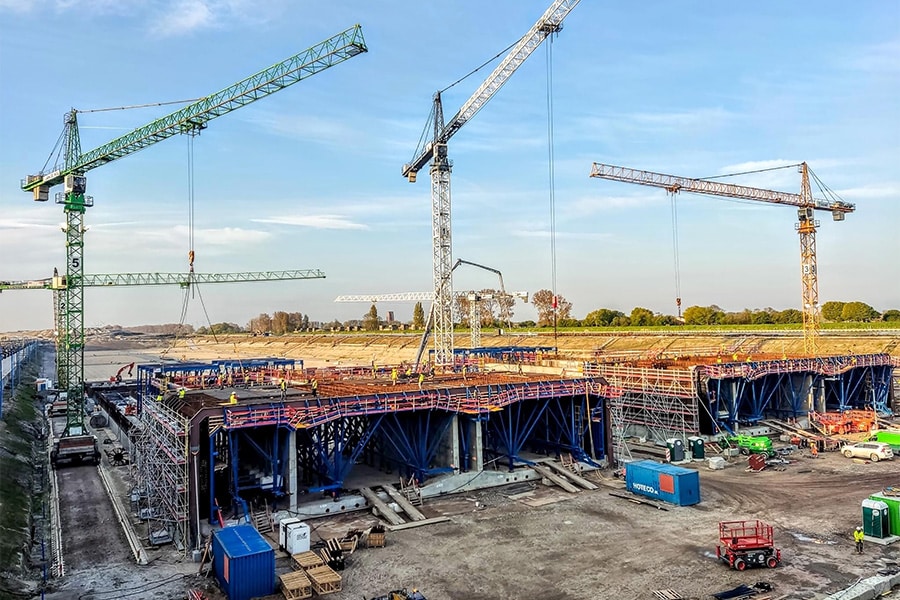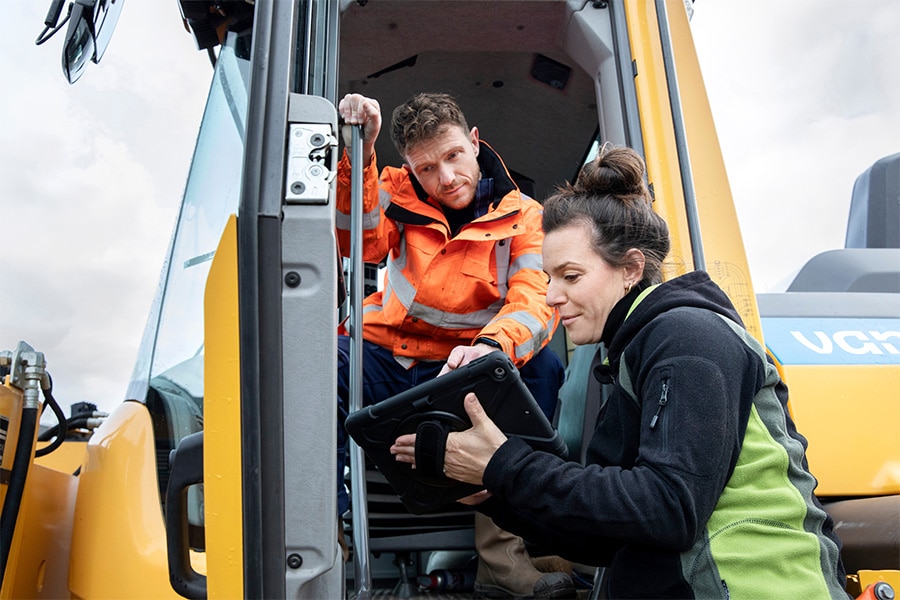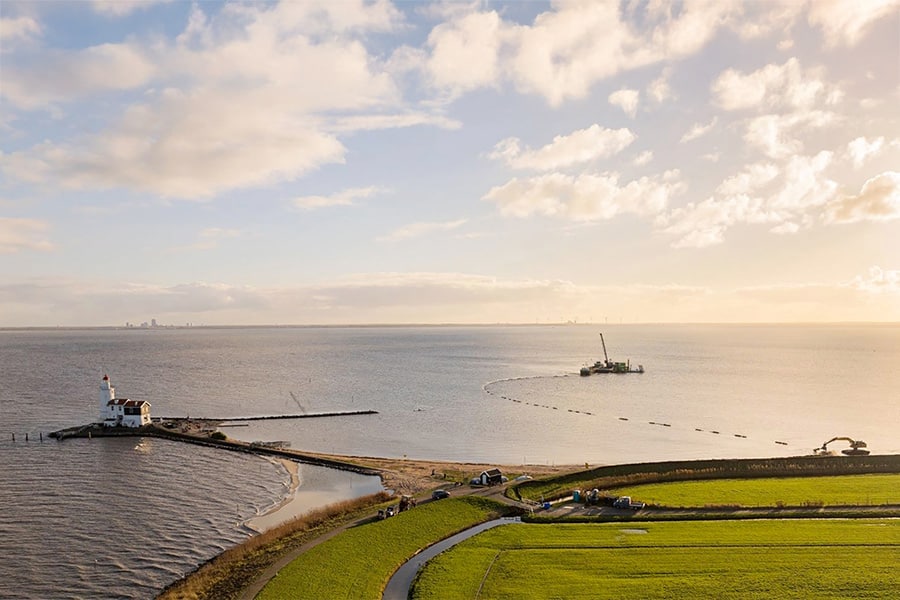
The hydraulic engineering sector as the foundation of the Netherlands
A bow wave of work is coming at us
The hydraulic engineering sector is the foundation of our country, emphasized Andrea Vollebregt, director of the Association of Hydraulic Engineers during InfraTech 2025. She pointed to the major challenges in the sector around the themes of sustainability and labor potential, and the enormous task in the field of water safety and water management. "There is a bow wave of work coming our way. The key is to respond to it as smartly and efficiently as possible." And the inspired director has a few ideas about that.
We notice that we are in a transition phase when it comes to sustainability, begins Andrea. "There's a lot to do about the laws and regulations that are not quite in sync with the latest developments, about actually making equipment more sustainable, the way in which clients ask for it, what compensation there is financially, etc. These are all issues that concern us as an association. Sustainable hydraulic engineering equipment is generally many times more expensive than conventional hydraulic engineering equipment, while we notice that clients who request sustainable equipment are not always willing to pay for it. Budgets are not always sufficient. Nevertheless, the sector is gradually investing in sustainable equipment."

Low Emission
For floating equipment, completely emission-free is also sometimes still a bridge too far, Andrea believes. "That certainly applies to the outlying area where there are no shore power or plug boxes. Obtaining sufficient hydrogen can also be a challenge. Quite a bit of additional infrastructure is needed to get this off the ground, not to mention the grid congestion that plays a part. Both clients and the sector are working very hard to find solutions and to really invest in sustainable equipment, but it is happening in phases. Large investments are involved. We have to realize that we are in a transition phase. Emission-free is not yet possible everywhere," Andrea emphasizes and appeals to clients to only ask for emission-free equipment where it is really necessary. "For example, near Natura2000 areas. In other places go to low-emission, in accordance with the agreements in the SEB covenant. In that, a lot more can be done and with that you already reduce CO2 emissions very far."

Entry and retention of skilled workers
Tightness in the labor market unfortunately does not bypass the hydraulic engineering sector either, continues Andrea, who thus immediately touches on the second major challenge. "In our sector, too, there is a great demand for well-trained personnel across the board. Both we as an association and our members are making every effort to make the hydraulic engineering sector visible. One way we do this is by presenting ourselves at educational fairs and giving guest lectures in schools. We also organize project visits to introduce young people to the hydraulic engineering sector. We notice that enthusiasm is growing. It is also a very exciting and diverse sector with plenty of opportunities and a secure future. You contribute to the Dutch landscape, sustainability issues and the economy. And in addition to the influx of new employees, staff retention is just as important. A lot of energy is put into personal development, creating good working conditions and knowledge development. For example through our own VOUW training course, exclusively for member companies. Or through setting up and offering a hydraulic engineering graduation profile in existing training courses, as has been done at the Dordrecht Academy."
Portfolio Approach
The large-scale replacement and renovation (V&R) task also affects the hydraulic engineering sector. The Dutch Association of Hydraulic Engineers is part of the Platform V&R, in which sector parties work together with Rijkswaterstaat, Bouwend Nederland and NLingenieurs to bring the task to the market as quickly and efficiently as possible in a number of portfolios. Specifically for the hydraulic engineering sector there is also a very big task, focused on water safety and water systems, the Flood Protection Program and the Water Framework Directive, where time is pressing to get to work quickly. "In existing initiatives there, too, market players are advising clients on, for example, the best suited contract forms, smart execution methods or how to enable innovations," Andrea said. "A good example of this is the Delta Technology Taskforce, in which the Association of Hydraulic Engineers works pre-competitively with other construction branches, focusing on water tasks throughout the Netherlands."
Take action
The Association of Hydraulic Engineers is also working within its own ranks to find solutions to future challenges. According to Andrea, the key is to take action more quickly. "In our sector, it takes a relatively long time for projects to come to fruition. Since time is short, we have drawn up a number of recommendations on how to accelerate; so-called implementation accelerators. One example is the bundling of tasks, whereby you immediately include the task with regard to the Water Framework Directive in a dyke reinforcement project. We are now in the process of elaborating these recommendations and making them more concrete. We are also thinking about longer-term issues such as freshwater retention, Room for the River 2.0 and protecting our coast. Can we continue to do the latter with nourishment alone? These are issues that need to be considered and experimented with now, so that we can be in a position to scale up in good time. We call these issues adaptation accelerators."
Finally, Andrea makes the call to move from brainpower to action. "Hydraulic engineering is an empirical science. You learn by doing it. Let's rely on the knowledge we have accumulated over the centuries on both the client and contractor sides, so that the tasks at hand can be implemented more quickly. There will always be risks, but we must act now. Climate change will not wait."
